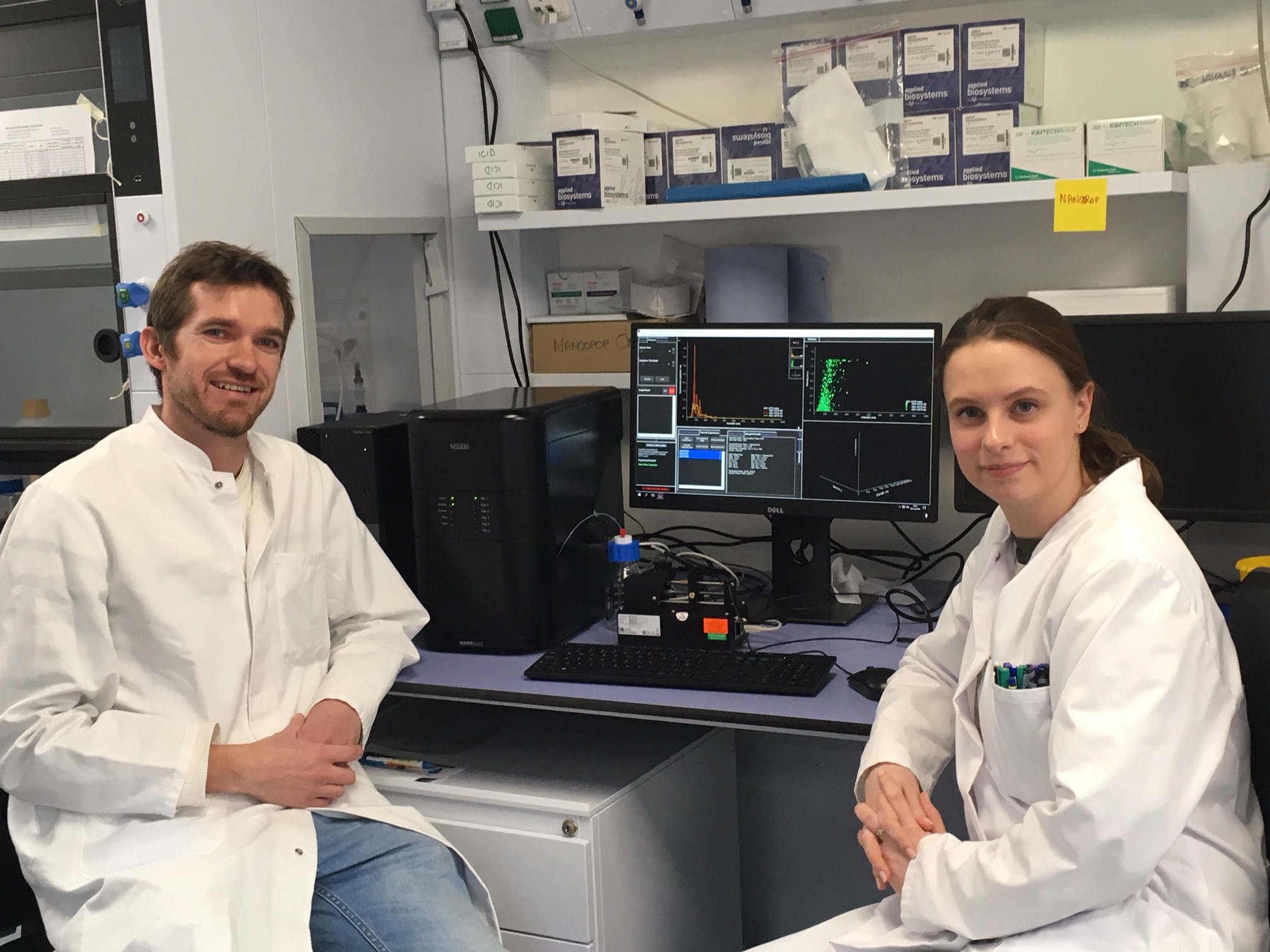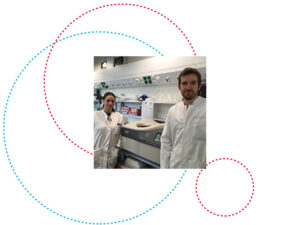Thanks to the “Fondation Cancer” support, the Life Sciences Research Unit (LSRU) has just acquired two brand new equipment: one ultracentrifuge and one nanosight. These acquisitions will definitely play an important role in the current and future research activities of the Research Unit. But what exactly is an ultracentrifuge and a nanosight? What can they do?
The ultracentrifuge aims to isolate extracellular vesicles, which are small vesicles (30-180 nm), transferring biomolecules such as proteins, mRNAs, non-coding RNAs and metabolites. This can reach high speed, until 50.000 round per minute, to isolate tiny particles (or viruses), which have very low densities. On the other side, the nanosight measures the size of very small particles between 10/40 to 1000/2000 nm and the concentration of particles from 106 to 109 particles / mL, such as extracellular vesicles.
“The ultracentrifuge and nanosight have been particularly used for our current project called SecMelPro”, explains Geoffroy Walbrecq, Postdoctoral researcher at the Life Sciences Research Unit (LSRU). This project actually aims to investigate the role of the secretome, which is the macromolecules released by the cells (including cytokines and extracellular vesicles) on the melanoma tumor microenvironment as well as the influence of hypoxia (lack of oxygen) on this crosstalk.

Geoffroy Walbrecq and Odile Lecha with the nanosight
As more and more research teams also investigate the content and the role of extracellular vesicles, both equipment are very useful to the entire Life Sciences Research Unit (LSRU) as well as to other research teams in the country, within and outside the University of Luxembourg: the Laboratoire National de Santé (LNS), the Luxembourg Centre for Systems Biomedicine (LCSB), Luxembourg Institute of Health (LIH), etc.
Since its creation in 1994, the Fondation Cancer is involved in cancer prevention, in cancer patient support and in funding cancer research.
